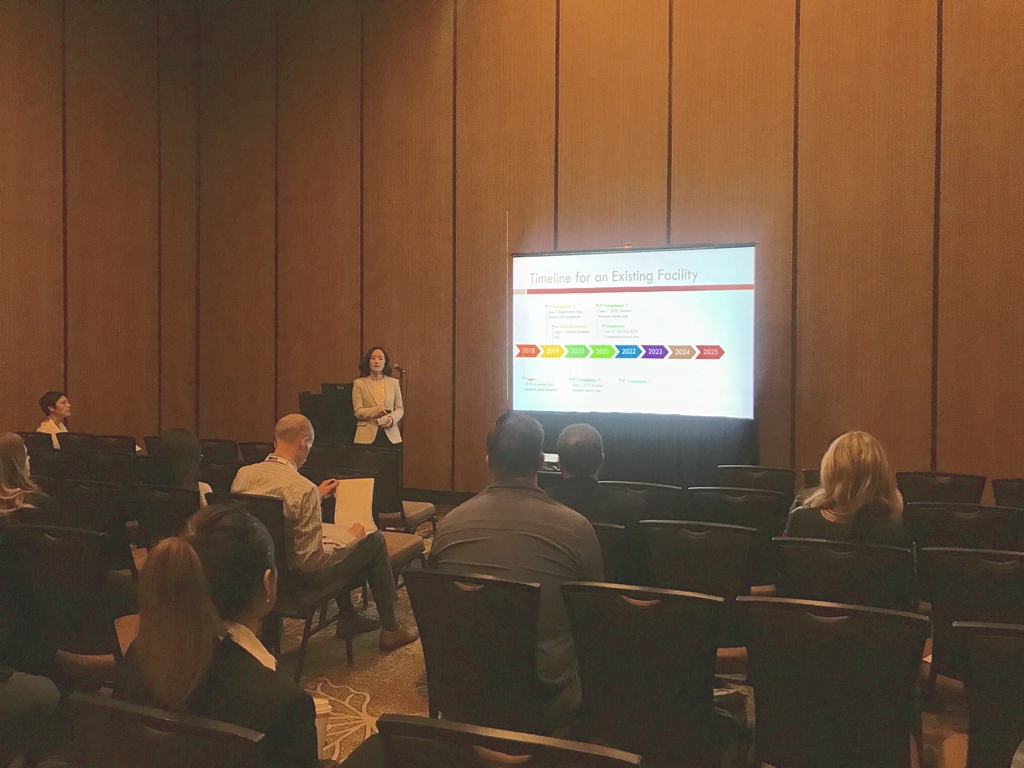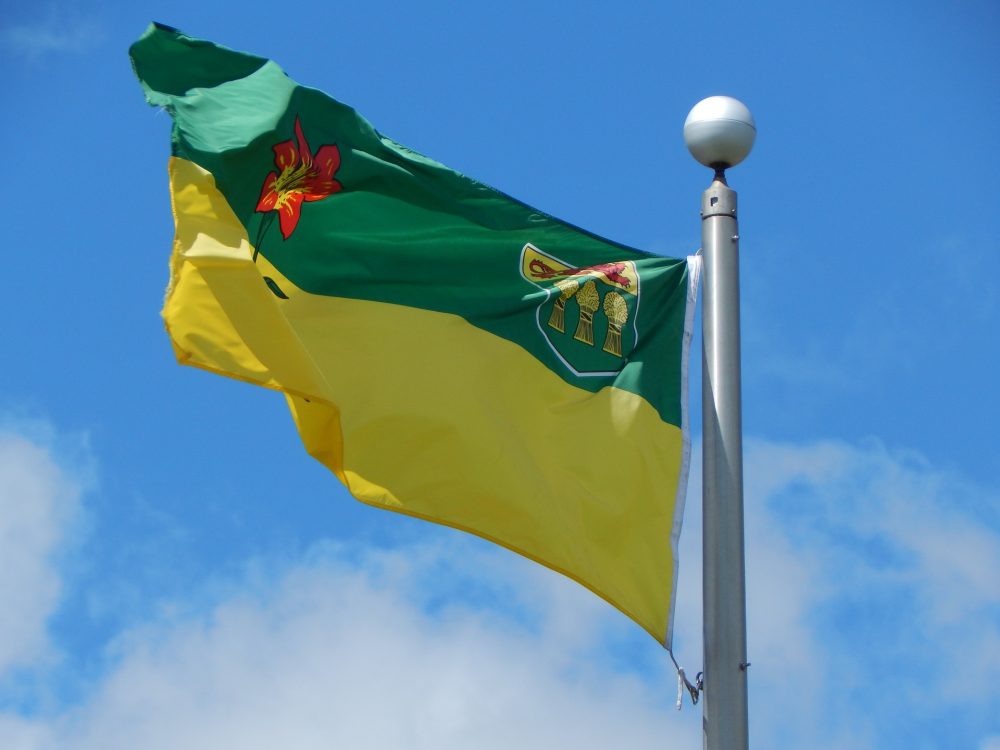North Shore recently took part in EnviroTech, an industry-wide conference bringing Environmental Professionals together for educational seminars and networking opportunities. North Shore has been a proud supporter of EnviroTech for many years and this year was no different, as we partnered with the conference as a returning Diamond Sponsor. We are also proud of our Air Team Coordinator, Hillary Yeung, as she led an important session highlighting some of the recent regulatory changes in Saskatchewan regarding greenhouse gas emissions and what that means for our clients in various business sectors.

Hillary’s presentation stemmed from Saskatchewan’s new Climate Change Strategy, Prairie Resilience, specifically the Output-Based Performance Standards (OBPS) program for large industrial emitters. The OBPS program aims to achieve a total emissions reduction of 10 per cent by 2030.
The focus of the North Shore presentation was educating the audience around the impacts for companies that have “large emitter” facilities, and how those organizations can become compliant under these new regulatory changes.
“Facilities in Saskatchewan are now required to comply with emission standards to reduce their greenhouse gas emissions, and this is the first time a program like this has been implemented in that province,” says Hillary.
“North Shore has reviewed the provincial strategy and regulations of the program, and going forward, we can advise our clients with operations in Saskatchewan on the process and steps needed to ensure their facilities are meeting compliance obligations.”
Registering Facilities
As of June 1, 2019 upstream oil and gas facilities that meet the following requirements must register with the Saskatchewan government:
- Facilities must register as a regulated facility if they emit more than 25,000 tonnes of
Carbon (CO2e) annually in stationary combustion emissions. - Facilities can voluntarily opt in if they emit more than 10,000 tonnes of Carbon (CO2e) annually in stationary combustion emissions.
Facilities in the OBPS program are exempt from paying the federal carbon tax on fuel.
Types of Facilities
The year the facility went into service will determine how operators will register the facility with the government:
- Existing facilities – facilities that have been in commercial production for at least 3 calendar years with an annual total of regulated emissions equal to or more than 25,000 tonnes of Carbon (CO2e).
- New Facilities – facilities that have been in commercial production for fewer than 3 calendar years with an annual total of regulated emissions equal to or more than 25,000 tonnes of Carbon (CO2e).
Following the registration of facilities with the Ministry of Environment, organizations will have to report baseline emissions quantities for each facility. This is something Hillary says North Shore’s Air Quality and Emissions Team can provide guidance on.
“Depending on if the facility is new or existing, there are different ways to calculate the baseline emissions and different requirements on when the facility must meet the compliance obligations,” she says.
“Facilities must be registered before baselines can be submitted to the government, and baseline emissions for existing facilities have to be submitted by September 1st of this year.”
How We Can Help
Flexibility within the regulatory obligations allows for facility operators to choose their own methodology in quantifying emissions. Options can include emission factors, energy equivalence factors, and unit conversions; the only stipulation is facilities must follow the same methodology from baseline to compliance.
Companies which emit more tonnes of Carbon (CO2e) than the permitted emissions will have to pay monetary fees to the government. The current fee for excess emissions is $20.00 per tonne, and that price will increase over the next three years by $10.00 a year, bringing the price to $50.00 per tonne by 2022.
“North Shore can help companies quantify emissions and estimate compliance costs with facilities applicable under the OBPS program,” she says. “We can also customize quantification methodologies, optimize baseline submissions, and assist companies in finding solutions for reducing emissions.”
More Information
- Contact – Hillary Yeung, Air Team Coordinator: hyeung@northshoreenv.com
- Visit – Air Quality Services



